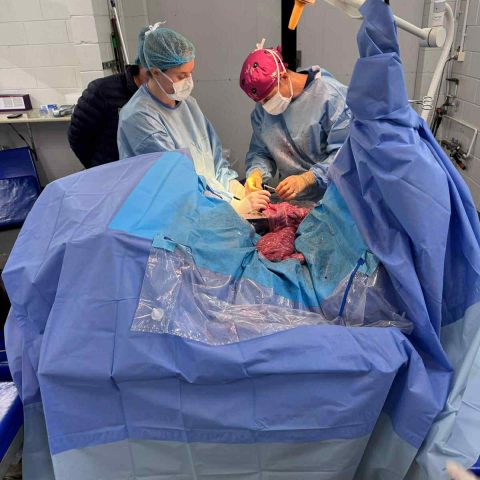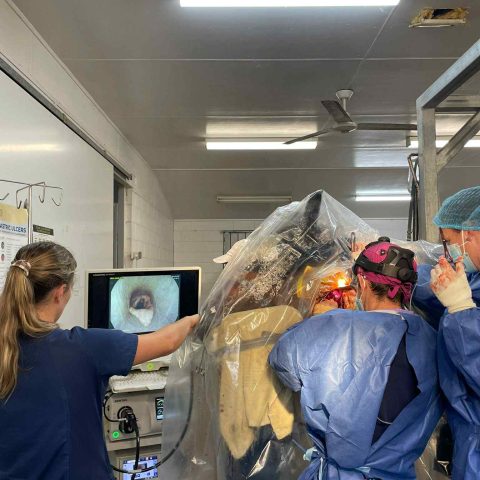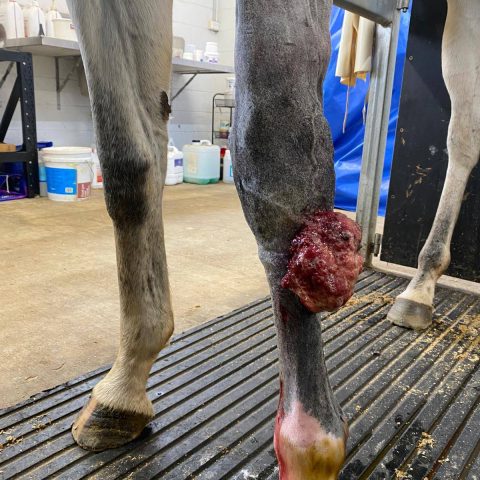Background
On 8 October 2025, we were contacted by the owner of Sunday, a gelding who had found himself in a sticky situation at Paynters Creek. In a classic case of spring fever, Sunday had attempted to cross the creek to visit a nearby mare but became bogged in deep mud halfway across.
The owner reached out for advice after Sunday had been trapped for more than two hours. Given the risks associated with prolonged immobility and the potential for water aspiration, our team immediately advised contacting Queensland Fire Department, which requires a veterinarian to be present before commencing any animal rescue operation.
Assessment on Arrival
Upon arrival, Sunday was found lying in thick mud, with the front half of his body fortunately positioned above the waterline. This meant he had not aspirated any water into his lungs, which is a significant advantage in preventing complications such as aspiration pneumonia.
Despite exhaustion from his efforts to free himself, Sunday was bright, responsive, and willing to eat. He was offered hay and molasses water to boost his glucose and energy levels before the rescue began. His vital signs were within normal limits, and sedation was deemed unnecessary. This decision allowed Sunday to use his own strength to assist once movement became possible.
Rescue Process
Working alongside the Nambour Fire Brigade, straps were carefully placed around Sunday’s chest to begin the extraction. The team slowly winched him forward by approximately half a metre, gaining access to his tail and allowing further manual assistance.
With each small repositioning, the straps were adjusted to improve leverage. Progress was made inch by inch until enough of his front body was freed for Sunday to push himself clear of the mud using his own strength. His rug was removed to reduce weight and enable unrestricted limb movement during the process.
After several careful manoeuvres, Sunday stood safely on firm ground – muddy, tired, but completely uninjured.
Outcome
Remarkably, Sunday escaped without a single scratch or soft tissue injury. As he had not aspirated any water, the risk of post-rescue respiratory complications was minimal. He was monitored closely following the extraction and made a full recovery.
Acknowledgements
We extend our sincere thanks to the Nambour Fire Brigade for their invaluable assistance and calm professionalism throughout the operation. Their skill, equipment, and teamwork played a crucial role in ensuring Sunday’s safe rescue.
Having collaborated with the brigade on several animal rescues over the years, we continue to be impressed by their expertise and composure under pressure.
Key Takeaways
Horses trapped in mud or water can deteriorate rapidly due to exhaustion, stress, and potential respiratory compromise.
Always contact your veterinarian immediately for advice as rescue operations must be coordinated with professionals.
Avoid attempting to pull a horse free without guidance, as incorrect technique can cause serious injury to both horse and handler.
If your horse ever finds themselves in a similar situation, please contact us immediately for professional advice and support.




